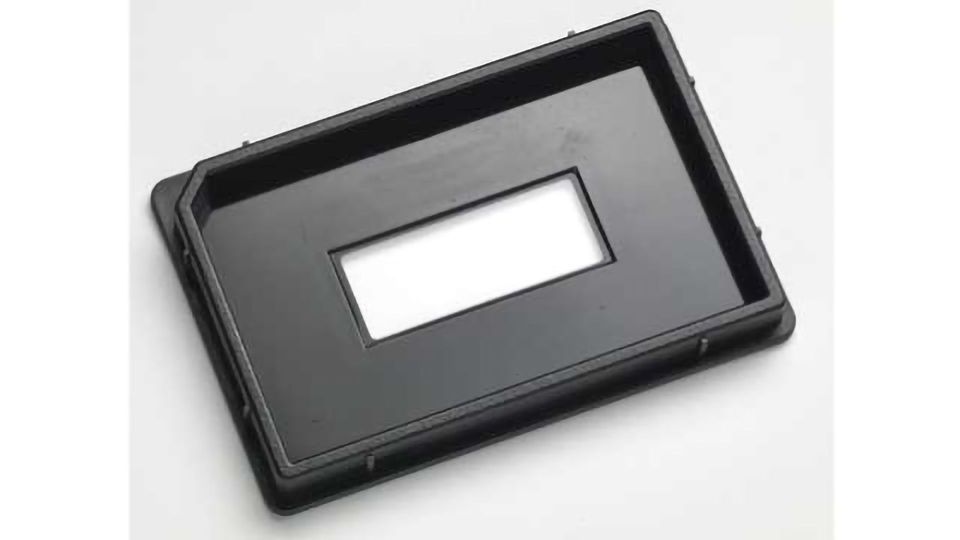Cell Based Screening Array Enhances Drug Discovery

Microplate for ImagineArray™ Platform
Want to listen to this article for FREE?
Complete the form below to unlock access to ALL audio articles.
Read time: Less than a minute
Porvair Sciences has collaborated with Persomics Inc. (Waltham, MA, USA) to develop and supply ANSI/SLAS format Arrays as an OEM product for their ImagineArray™ platform.
On the Persomics ImagineArray™ platform, traditional microplate wells are replaced with contact-printed spots on a slide which is mounted into an SLAS/ANSI format frame. Each spot is a unique experiment that edits or silences a single gene in cells growing above the RNA spot. Each spot encapsulates an individual or pooled gRNA, siRNA or miRNA and all the reagents needed for transfection. ImagineArrays™ enable researchers to edit or silence thousands of genes on a single slide making them the perfect tool for cell-based screening as well as advanced experiments such as drug/gene interaction screens and synthetic lethality. This proprietary technology reduces the time and cost of drug discovery by double digit factors.
Working closely with Porvair Sciences, Persomics refined their spotted arrays and were able to have them successfully embedded in the frames made and assembled by Porvair to their demanding specification. Steve Knight, Marketing Director commented “This is yet another example of a collaborative development project between Porvair Sciences and a young start-up technology company that enables novel technology to be delivered to the market in the industry-standard microplate format with all the advantages of automation, handling and detection that the format confers”.
On the Persomics ImagineArray™ platform, traditional microplate wells are replaced with contact-printed spots on a slide which is mounted into an SLAS/ANSI format frame. Each spot is a unique experiment that edits or silences a single gene in cells growing above the RNA spot. Each spot encapsulates an individual or pooled gRNA, siRNA or miRNA and all the reagents needed for transfection. ImagineArrays™ enable researchers to edit or silence thousands of genes on a single slide making them the perfect tool for cell-based screening as well as advanced experiments such as drug/gene interaction screens and synthetic lethality. This proprietary technology reduces the time and cost of drug discovery by double digit factors.
Working closely with Porvair Sciences, Persomics refined their spotted arrays and were able to have them successfully embedded in the frames made and assembled by Porvair to their demanding specification. Steve Knight, Marketing Director commented “This is yet another example of a collaborative development project between Porvair Sciences and a young start-up technology company that enables novel technology to be delivered to the market in the industry-standard microplate format with all the advantages of automation, handling and detection that the format confers”.

